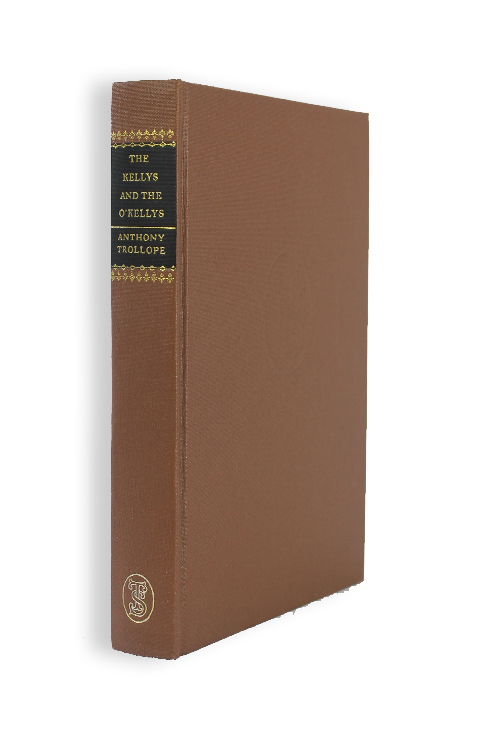Kellys and the O’Kellys, The
The Trollope Society Edition Clearance Sale is only available in the UK.
Original price was: £25.00.£5.00Current price is: £5.00.
Clearance Sale UK only
Coupons are not valid with this offer
Available to members only
Introduction by Terence deVere White
424 pages
London, Colburn, 1848. 3v.
He had been an Earl, with a large income, for thirty years; and in that time he had learned to look collected, even when his ideas were confused’. He is Lord Cashel, guardian of Fanny Wyndham, one of the two strongly contrasted heroines in The Kellys and the O’Kellys; In his second novel, once again Trollope had made an Irish setting central to his plot. Ignored at the time of publication, and difficult to obtain in print for many years, this is a more assured and polished piece of work than The Macdermots of Ballycloran.
For the first time in his writing career, he experimented with a double-plot, a device which he learnt to use with increasing expertise.The first concerns the aristocratic Fanny Wyndham. She is the ward of Lord Cashel, who, upon discovering that Fanny is heiress to her brother’s fortune, attempts to marry her off to his dissolute and debt-ridden son. However, Fanny is already engaged to (and in love with) Francis O’Kelly, Lord Ballindine. The conflict really begins when Lord Cashel demands that Fanny breaks this engagement. The second plot concerns the ill-educated Anastasia Lynch, wooed and wanted, at least to begin with, for her dowry of £400 a year by Lord Ballindine’s tenant Martin Kelly.
One of Trollope’s favourite themes runs all the way through the novel: the pursuit of money for its own sake, and the triumph of true feelings over such avarice. The irony Trollope provides is the slow – and quite moving – realisation that Martin Kelly has, after all, fallen in love with this financially desirable prey, ten years older than he. Tightly constructed and speedily paced, anticipating in many ways the works of Somerville and Ross (written over half a century later), The Kellys and the O’Kellys also introduces us to many of Trollope’s favourite preoccupations, such as hunting, racing, and betting. And for the first time we get a glimpse of the author’s famous attention to detail: life in a small village inn (owned by Mrs Kelly) or a lawyer’s office, both of which the reader can practically taste and smell. Here, too, we have Trollope’s first attempt at a description of a great country house, the gloomy Grey Abbey near the Curragh, where Fanny lives poised between her overbearing guardian and his wife ‘who slept the greatest portion of her time, and knitted through the rest of her existence’.
